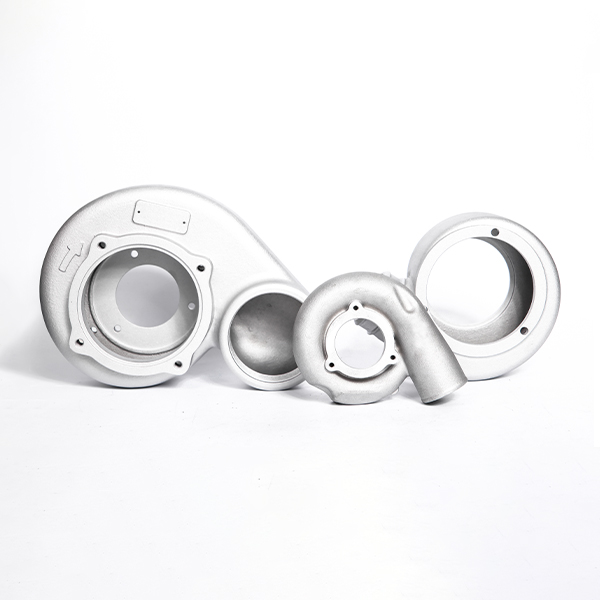Mobile:+86-311-808-126-83
Email:info@ydcastings.com
End Caps for Pressure Vessels Key Design Considerations and Manufacturing Techniques
Understanding Pressure Vessel End Caps Essential Components for Safety and Efficiency
Pressure vessels are critical components in various industrial applications, including chemical processing, oil and gas production, and power generation. These vessels are designed to contain fluids at high pressures and temperatures safely. One notable feature of pressure vessels is their end caps, which play a vital role in ensuring structural integrity and operational safety. This article will delve into the importance of pressure vessel end caps, their design considerations, materials used, and their impact on the overall functionality of pressure vessels.
What Are Pressure Vessel End Caps?
End caps are fittings used to seal both ends of a pressure vessel, providing a closure that maintains the internal pressure and prevents leakage. They are crucial in creating a secure environment for the fluids contained within the vessel, whether gases or liquids. Given the critical role they play, the design and manufacturing of end caps must adhere to stringent regulations and engineering standards.
Importance of End Caps in Pressure Vessels
1. Structural Integrity End caps enhance the structural integrity of pressure vessels. They must withstand external forces and the internal pressure generated by the contained fluid. A failure in the end cap can lead to catastrophic consequences, including leaks, explosions, or vessel ruptures.
2. Preventing Contamination Properly designed and installed end caps prevent contamination from external sources. This is especially important in industries that handle toxic, reactive, or hazardous materials. Contamination can lead to product degradation, safety hazards, and regulatory non-compliance.
3. Ease of Maintenance End caps facilitate access for maintenance and inspection. Many pressure vessels require periodic checks to ensure that they are in good working order. End caps designed for easy removal allow technicians to perform these inspections without extensive downtime.
4. Pressure Regulation In applications where pressure must be controlled, end caps incorporate pressure relief mechanisms. These ensure that if the pressure exceeds safe limits, it can be released safely, preventing potential damage to the vessel.
pressure vessel end caps

Design Considerations for End Caps
The design of pressure vessel end caps involves several critical considerations
1. Material Selection The choice of material for the end caps is paramount. Common materials include carbon steel, stainless steel, and various alloys, each selected based on the fluid's properties, temperature, and pressure conditions. Corrosion resistance is a key factor in material selection, especially for applications involving aggressive chemicals.
2. Thickness and Reinforcement The thickness of the end caps must be sufficient to withstand the operational pressures. In some cases, reinforcement may be necessary. Engineers typically follow codes such as ASME (American Society of Mechanical Engineers) for calculating the appropriate thickness and reinforcement based on the specific pressure and temperature conditions.
3. Welding and Joining Techniques The methods used to attach end caps to the body of the vessel are crucial for maintaining the integrity of the seal. Common techniques include welding and bolting, with the choice depending on the operational requirements and the materials involved.
4. Testing and Certification After manufacturing, end caps undergo rigorous testing to ensure they meet the necessary safety standards. This may include pressure testing, non-destructive testing methods, and inspections in accordance with industry regulations.
Conclusion
Pressure vessel end caps are essential components that ensure the safe and efficient operation of pressure vessels. Their critical role in maintaining structural integrity, preventing contamination, facilitating maintenance, and regulating pressure cannot be understated. As industries continue to innovate and expand, the design and manufacturing of pressure vessel end caps will remain a focus of engineering excellence. By adhering to stringent design considerations and rigorous testing protocols, manufacturers can provide end caps that not only comply with safety standards but also contribute to the overall reliability and efficiency of pressure vessels in various industrial applications. Understanding the complexities and importance of these components is vital for engineers and safety professionals working in fields that rely on high-pressure systems.
-
Why Should You Invest in Superior Pump Castings for Your Equipment?NewsJun.09,2025
-
Unlock Performance Potential with Stainless Impellers and Aluminum End CapsNewsJun.09,2025
-
Revolutionize Your Machinery with Superior Cast Iron and Aluminum ComponentsNewsJun.09,2025
-
Revolutionize Fluid Dynamics with Premium Pump ComponentsNewsJun.09,2025
-
Optimizing Industrial Systems with Essential Valve ComponentsNewsJun.09,2025
-
Elevate Grid Efficiency with High-Precision Power CastingsNewsJun.09,2025











